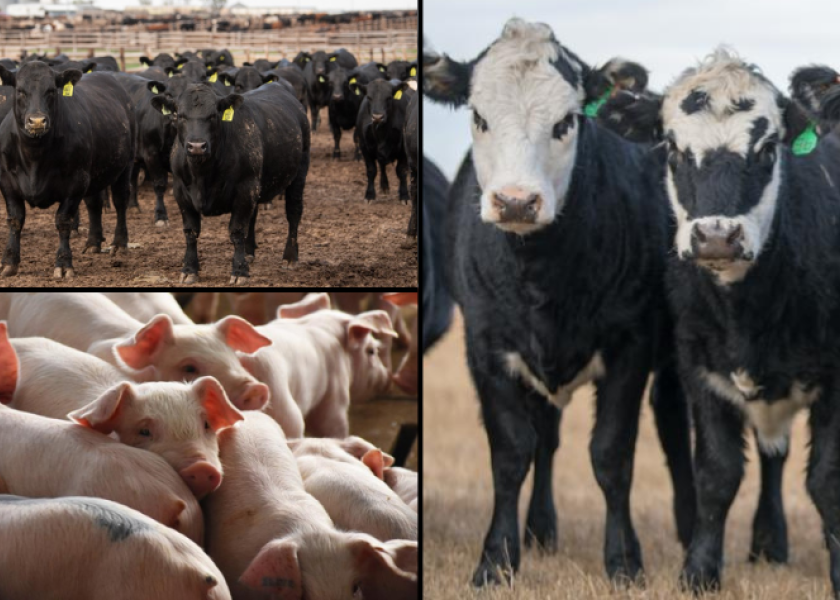Recognizing Animals Danger Security (LRP) Insurance Coverage: A Comprehensive Guide
Navigating the world of animals danger defense (LRP) insurance can be an intricate venture for lots of in the agricultural market. From just how LRP insurance functions to the different protection options readily available, there is much to uncover in this extensive guide that can possibly form the means livestock manufacturers come close to risk administration in their organizations.

Just How LRP Insurance Functions
Sometimes, understanding the mechanics of Animals Danger Defense (LRP) insurance coverage can be complex, yet breaking down just how it functions can provide clearness for breeders and farmers. LRP insurance is a risk administration tool created to secure animals manufacturers versus unforeseen cost declines. It's essential to note that LRP insurance coverage is not an earnings warranty; rather, it concentrates solely on price risk protection.
Qualification and Insurance Coverage Options

When it pertains to protection alternatives, LRP insurance coverage offers producers the versatility to pick the protection level, coverage period, and endorsements that finest suit their danger monitoring needs. Protection degrees usually vary from 70% to 100% of the anticipated ending value of the insured livestock. Manufacturers can also choose insurance coverage durations that align with their production cycle, whether they are guaranteeing feeder livestock, fed cattle, swine, or lamb. Recommendations such as price risk protection can further tailor protection to secure against damaging market fluctuations. By understanding the eligibility criteria and protection choices available, animals producers can make educated decisions to manage risk efficiently.
Pros and Cons of LRP Insurance Policy
When reviewing Animals Danger Protection (LRP) insurance policy, it is important for animals manufacturers to weigh the drawbacks and benefits intrinsic in this risk management device.

Among the primary advantages of LRP insurance is its capability to provide security against a decline in animals rates. This can help protect manufacturers from economic losses resulting from market fluctuations. Furthermore, LRP insurance uses a level of adaptability, allowing manufacturers to customize protection degrees and plan periods to suit their specific requirements. By securing in a guaranteed cost for their animals, manufacturers can much better handle threat and prepare for the future.
One constraint of LRP insurance coverage is that it does not protect versus all types of blog here threats, such as illness outbreaks or all-natural disasters. It is crucial for manufacturers to carefully analyze their private risk direct exposure and monetary situation to establish if LRP insurance coverage is the ideal risk administration tool for their operation.
Recognizing LRP Insurance Coverage Premiums

Tips for Optimizing LRP Benefits
Taking full advantage of the advantages check over here of Animals Risk Security (LRP) insurance policy calls for tactical planning and aggressive risk administration - Bagley Risk Management. To maximize your LRP coverage, think about the adhering to tips:
Regularly Evaluate Market Problems: Stay notified about market patterns and rate changes in the livestock market. By monitoring these aspects, you can make educated decisions regarding when to acquire LRP coverage to shield against possible losses.
Establish Realistic Coverage Levels: When choosing protection levels, consider your production costs, market price of livestock, and possible risks - Bagley Risk Management. Establishing realistic insurance coverage levels makes certain that you are effectively secured without overpaying for unnecessary insurance
Expand Your Insurance Coverage: Rather of relying solely on LRP insurance, take into consideration expanding your risk management approaches. Integrating LRP with other risk monitoring devices such as futures contracts or alternatives can give thorough protection against market unpredictabilities.
Testimonial and Change Insurance Coverage Consistently: As market conditions change, regularly evaluate your LRP insurance coverage to ensure it straightens with your present risk direct exposure. Adjusting protection levels and timing of purchases can aid enhance your risk security strategy. By complying with these tips, you can make the most of the advantages of LRP insurance coverage and safeguard your livestock procedure against unanticipated risks.
Final Thought
To conclude, livestock danger protection (LRP) insurance policy is a valuable tool for farmers to handle the economic risks related to their animals operations. By recognizing how LRP works, eligibility and insurance coverage alternatives, as well as the pros and disadvantages of this insurance policy, farmers can make informed decisions to safeguard their resources. By carefully thinking about LRP costs and applying strategies to make best use of advantages, farmers can mitigate potential losses and guarantee the sustainability of their procedures.
Livestock producers interested in acquiring Animals Threat Security (LRP) insurance coverage can explore a range of eligibility requirements and insurance coverage alternatives tailored to their certain animals procedures.When it comes to coverage choices, LRP insurance policy supplies producers the flexibility to choose the coverage level, coverage duration, pop over to these guys and recommendations that best suit their risk management requirements.To realize the complexities of Livestock Risk Security (LRP) insurance policy completely, recognizing the factors influencing LRP insurance costs is critical. LRP insurance policy costs are figured out by different elements, consisting of the insurance coverage level chosen, the anticipated cost of livestock at the end of the coverage duration, the type of animals being guaranteed, and the length of the insurance coverage duration.Review and Readjust Protection On a regular basis: As market conditions transform, regularly evaluate your LRP insurance coverage to ensure it aligns with your present risk direct exposure.